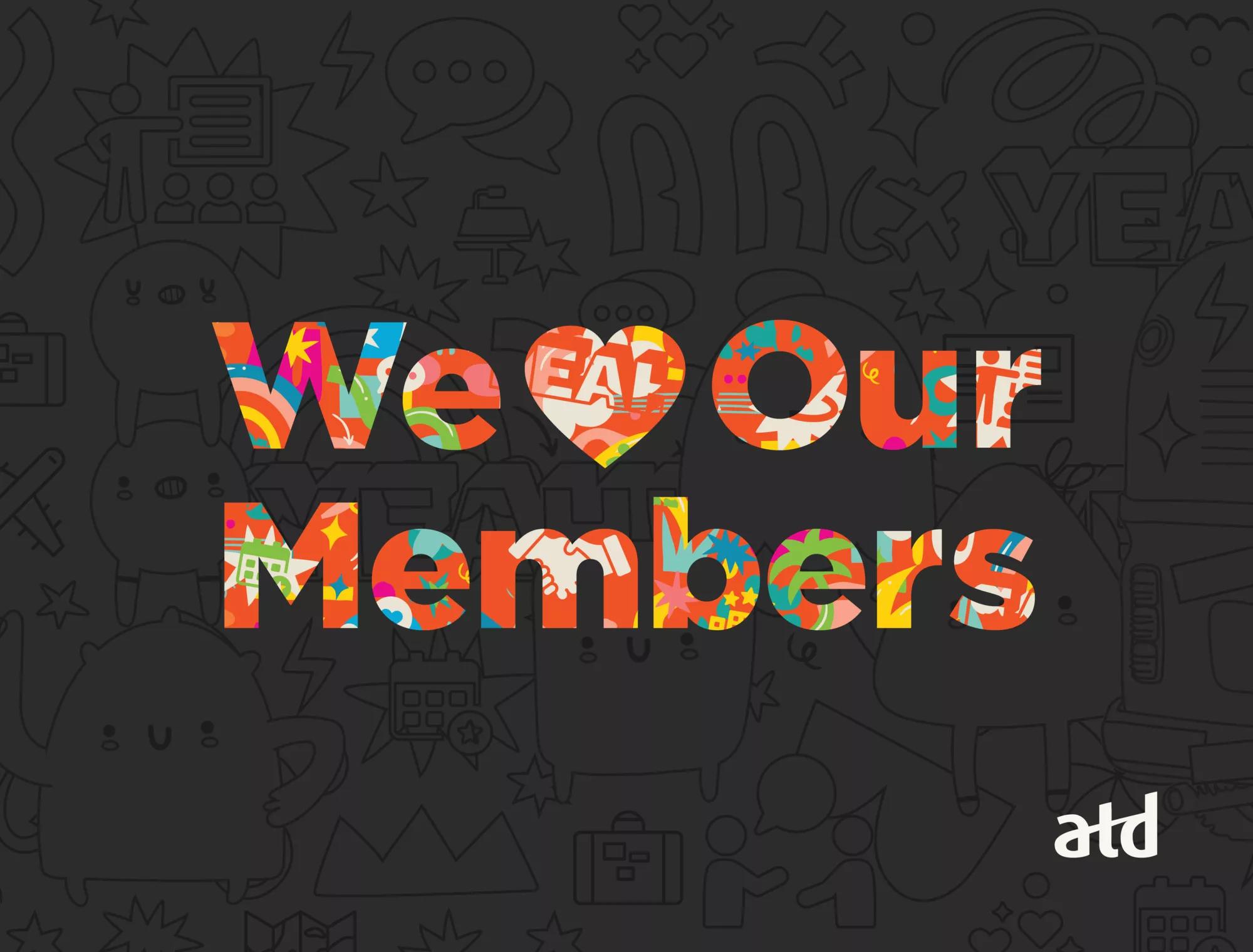What Is Employee Training and Development?
Employee training and development includes any activity that helps employees acquire new, or improve existing, knowledge or skills. Training is a formal process by which talent development professionals help individuals improve performance at work. Development is the acquisition of knowledge, skill, or attitude that prepares people for new directions or responsibilities. Training is one specific and common form of employee development; other forms include coaching, mentoring, informal learning, self-directed learning, or experiential learning.
What Are the Benefits of Employee Training and Development?
Employee training and development can help employees become better at their jobs and overcome performance gaps that are based on lack of knowledge or skills. This can help organizations and teams be more productive and obtain improved business outcomes, leading to a competitive advantage over other companies.
Training can help organizations be more innovative and agile in responding to change and can help with necessary upskilling and reskilling to help organizations ensure that their labor force meets their current needs. Employee training and development also can help with succession planning by helping to identify high-performing employees and then assisting those employees with the development of the knowledge and skills they need to advance into more senior roles. Employee training and development can be an effective tool for recruiting and retention, since many employees cite a lack of development opportunities at their current job as a primary reason for leaving. Employees who have access to training and development opportunities are more likely to stay at their organizations for a longer period of time and be more engaged while there; in fact, LinkedIn’s 2018 Workplace Learning Report found that 93 percent of employees would stay at a company longer if it invested in their careers. Their 2021 Workplace Leaning Report additionally found that companies with high internal mobility retain employees for twice as long. Finally, some forms of employee training, such as compliance training or safety training, can help organizations avoid lawsuits, workplace injuries, or other adverse outcomes.
What Types of Employee Training and Development Exist?
There are many types of employee training and development. In high performing organizations, training and development initiatives are based on organizational needs, the target audience for the initiative, and the type of knowledge or skill that learners are expected to obtain. Some of the most common types of employee training and development include:
Technical training is training based on a technical product or task. Technical training if often specifically tailored to a particular job task at a single organization. Skills training is training to help employees develop or practice skills that are necessary for their jobs.
Soft skills training is a subset of skills training that focuses specifically on soft skills, as opposed to technical or “hard” skills. Soft skills include emotional intelligence, adaptability, creativity, influence, communication, and teamwork. Some trainers refer to soft skills as “power skills” or “professional life skills” to emphasize their importance.
Compliance training is training on actions that are mandated by a law, agency, or policy outside the organization’s purview. Compliance training is often industry-specific but may include topics such as cybersecurity and sexual harassment.
Safety training is training that focuses on improving organizational health and safety and reducing workplace injury. It can encompass employee safety, workplace safety, customer safety, and digital and information safety. Safety training can include both training that is required by law and training that organizations offer without legally being required to do so.
Management development focuses on providing managers with the knowledge and skills that they need to be effective managers and developers of talent. Topics may include accountability, collaboration, communication, engagement, and listening and assessing.
Leadership development is any activity that increases an individual’s leadership ability or an organization’s leadership capability, including activities such as learning events, mentoring, coaching, self-study, job rotation, and special assignments to develop the knowledge and skills required to lead.
Executive development provides senior leaders and executives with the knowledge and skills that they need to improve in their roles. In contrast to leadership development, which focuses on helping non-executive employees develop the skills they need to obtain a leadership position, executive development is targeted at people already at a leadership level within their organization.
Customer service training focuses on providing employees with the knowledge and skills to provide exceptional customer service. Customer service training should include content on essential employee behaviors, service strategies, and service systems.
Customer education training is when employees—often at technology or SaaS companies—teach customers how to use a company’s products and services. Customer education training differs from traditional employee learning and development because the intended audience is customers, not employees.
Workforce training focuses on upskilling workers to help them obtain career success. Workforce training programs are often offered by federal, state, or local governments, or by nonprofit organizations. Workforce training may include job-specific content but also may include content on organizational culture, leadership skills, and professionalism. Workforce training is often accessed by people who are new to the workforce or who are trying to enter a new job type or industry.
Corporate training focuses on helping workers already employed by an organization obtain new knowledge and skills. That company or organization offers training to their internal employees to help them become better at their current jobs, advance in their careers, or close organizational skill gaps.
Onboarding sometimes known as new employee orientation, is the process through which organizations equip new employees with the knowledge and skills they need to succeed at their jobs.
Sales enablement is the strategic and cross functional effort to increase the productivity of market-facing teams by providing ongoing and relevant resources throughout the buyer journey to drive business impact. It encompasses sales training, coaching, content creation, process improvement, talent development, and compensation, among other areas.
What Are Examples of Effective Employee Training Methods?
There are many types of employee training and development methods, including:
Instructor-led training, which can be either in-person or virtual.
In-person training refers to training in which the instructor is physically in the same room as the learners. This also may be referred to as face-to-face training or classroom training.
Virtual Instructor-Led Training (VILT) refers to instructor-led training that occurs virtually when the instructor and learners are physically dispersed. VILT takes place through a virtual platform such as Zoom or Webex. VILT also may be referred to as synchronous e-learning, live-online training, synchronous online training, or virtual classroom training
E-learning is a structured course or learning experience delivered electronically. E-learning can be either asynchronous or synchronous. Asynchronous e-learning is self-paced and may include pre-recorded lecture content and video, visuals and/or text, knowledge quizzes, simulations, games, and other interactive elements.
Microlearning enhances learning and performance through short pieces of content. Microlearning assets can usually be accessed on-demand when the learner needs them. Common forms of microlearning include how-to videos, self-paced e-learning, games, blogs, job aids, podcasts, infographics, and other visuals.
Simulation is a broad genre of experiences, including games for entertainment and immersive learning simulations for formal learning programs. Simulations use simulation elements to model and present situations; portraying actions and demonstrating how the actions affect relevant systems, and how those systems produce feedback and results.
On-the-job training is a delivery system that dispenses training to employees as they need it. As opposed to sending an employee away from work to a training session, on-the-job training allows employees to learn while in the flow of work.
Coaching is a discipline that helps to enhance individual, team, and organizational performance. Coaching is an interactive process that involves listening, asking powerful questions, strengthening conversations, and creating action plans, with the goal of helping individuals develop towards their preferred future state.
Mentoring is a reciprocal and collaborative at-will relationship that most often occurs between a senior and junior employee for the purpose of the mentee’s growth, learning, and career development. Mentors often act as role models for their mentee and provide guidance to help them reach their goals.
Blended learning refers to a training program that includes more than one of the training types referenced above. Traditionally blended learning most often includes a mix of in-person training and e-learning. However, it can refer to any combination of formal and informal learning events, such as classroom instruction, online resources, and on-the-job coaching.
How Can Organizations Build Employee Training and Development Programs?
Organizations that want to create an employee training and development program should begin by conducting a needs assessment. In a needs assessment, a talent development professional, often an instructional designer, collects and synthesize data and information to determine the difference between the current condition and the desired future state of the organization, business unit, or team. The needs assessment can uncover the specific skill or knowledge gaps, identify the best way to close the gap, gain support from stakeholders who are involved in the assessment, and build rapport with learners. Depending on the scope of the project involved, the organization may need to involve an instructional designer or team of instructional designers. The instructional designer(s) will then create learning experiences and materials that result in the acquisition and application of knowledge and skills. In other instances, an organization might purchase off the shelf training from a vendor, or provide development opportunities by leveraging digital assets, employing leaders as teachers, or through some other method. After the training and development program has been created, organizations need to determine how employees will access it. This will be dependent on the specific audience for the training, as well as the type of training and the technology involved.
How ATD Can Help You With Employee Training & Development
ATD is the world’s largest association dedicated to those who develop talent in the workplace. We provide world-class professional development resources that equip and empower trainers, instructional designers, and other talent development professionals. For access to even more training and development resources, including practical tools and templates, research, and insights, you’re invited to become an ATD member. Learn more.
From individual practitioners to full L&D teams, ATD it the trusted source for actionable tools, research, events, courses, and certifications.

BLOGS
23 Key Training & Development Topic Pages
Explore 23+ L&D topics, each with in-depth blogs that dive into the latest trends and best practices in training and development. Start here!

NEWSLETTERS
ATD Newsletters
Sign up to receive newsletters from ATD topic areas catered to your interest. Learn more!

WEBINARS
Upcoming Webinars
ATD gives you the opportunity to connect live with industry leaders with the Watch & Learn webcast series. View Webinars

GLOSSARY TERMS
Talent Development Glossary Terms
Learn about essential terms and need-to-know expressions for training and development professionals. Explore now!

Education Course Catalog
As TD professionals, it’s our job to encourage, promote, and inspire people to learn and grow. And it’s critical that we do the same for you. Explore 160+ courses for practitioners like you. Start Browsing

EVENTS
ATD Events
Talent development professionals come together to give you conference experiences that are diverse in education, solutions, and opportunities. Learn more!

MEMBERSHIP
Membership
Elevate your career, expand your horizons, and make a lasting impact. Join us today and embark on a journey of growth, connection, and achievement with ATD. Your future self will thank you.

BOOKS
Publications
ATD Press is an internationally renowned source of insightful and practical information on talent development and professional development.
Free Whitepaper: Upskilling and Reskilling: Turning Disruption and Change Into New Capabilities
By applying the forward-facing learning strategies of upskilling and reskilling to enable employees to build new and improved capabilities.
